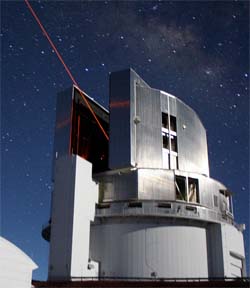I know that the Hubble Ultra Deep Field imaging campaign reached a limiting magnitude of 31, but what is the faintest object imaged by ground-based telescopes? Furthermore, how is it that an amateur astronomer was able to reach magnitude 24 with a 16-inch telescope, when even Hubble has gone no deeper than 31st magnitude?

The faintest objects reliably detected from the ground at visual wavelengths were captured by the 8.2-meter Subaru telescope in Hawaii. The Subaru Deep Field survey used 10 hours of exposure time, and the faintest blips that it captured with a signal-to-noise ratio of at least 3 had visual magnitudes of 27.7 — about 20 times brighter than the corresponding Hubble Ultra Deep Field limit.
Louisiana State University astronomer Bradley E. Schaefer isn’t surprised that Canadian amateur Paul Boltwood could get within a few magnitudes of Subaru, even though his 16-inch telescope has 1/400 of Subaru’s collecting area (S&T: May 1999, page 126). It’s true that a larger objective picks up more light from the object of interest, but it also picks up more skyglow, notes Schaefer. Signal to noise, a fundamental statistical measure of an image’s clarity, is proportional to aperture, not collecting area. It also is proportional to the square root of exposure time.
Since Boltwood’s telescope has 1/20 the aperture of Subaru, and he racked up only twice as much exposure time, from a signal-to-noise point of view one shouldn’t be too surprised that the faintest objects he detected were only about 30 times (3.7 magnitudes) brighter than those that Subaru picked up. (He might have come even closer had he also been on Mauna Kea.)
As for 2.4-meter-wide Hubble’s going about 20 times fainter in 277 hours than Subaru did in 10, you can chalk that up to the space telescope’s freedom from skyglow as well as its superior angular resolution.
— Joshua Roth
 0
0







Comments
You must be logged in to post a comment.